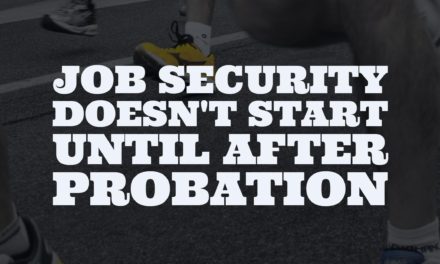Does joining a new team make you feel a little uneasy? Have you ever wondered why? It might be because you don’t yet have a social identity of being part of the team. Social identity theory predicts how people interact with each other based on whether they are a member of the in-group or out-group. This is could be thought of in terms of ‘us’ or ‘them’. That uneasiness is an indicator that you recognize that you aren’t yet part of the in-group. And, it may be triggering a very natural sense of social anxiety.* The anxiety that comes with believing (or knowing) that you are being judged and evaluated by others.
And the truth is, both you and the members of the team are judging each other. Both sides are determining whether you will fit in and whether you will become a valued member of the team.
So how do you make the transition from being ‘me’ to a member of ‘we’ more easily? The answer isn’t simple. But we’d like to offer you a few tips to make this transition a little quicker.
As fair warning, it won’t necessarily make you feel any less uneasy at first.
Understanding social identity theory
The theory came into the psychology literature in the 1970’s as a means to understand how groups interact by Tajfel and Turner. Social identity theory provides some insight into many of the social ills of our communities (e.g., discrimination) or failures in team functioning (e.g., group think). But, we can also use it to our advantage to accelerate our acceptance into the team.
Social identity theory consists of three core considerations.
- Perceived group status differences. How different is one group from another?
- Perceived legitimacy and stability of those differences. Are those differences real or significant? Are those differences situational?
- Perceived ability to move from one group to another. Are the boundaries of the group permeable?
Using social identity theory to gain acceptance into the team
First, you must overcome the belief that you are significantly different from the team.
You can do this by getting to know members on the team.
- Accept invitations (and extend invitations) to do things together like getting coffee or lunch. This gives you an opportunity to get to know one another.
- Avoid making comparisons to how things were done on your prior team. This just reinforces that sense of ‘us’ and ‘them’.
Second, you must decrease the legitimacy of any perceived difference.
To do this, you need to move your more superficial interactions (e.g., coffee) into more significant interactions that demonstrate your deeper similarities.
- Start to understand the social norms of the team. That is look for what the expectations of ‘normal’ activities for the team. The key here is to listen, observe, and ask questions.
- Get to know how the work is done in the current team and adapt. Oftentimes, new comers are looking to change things. But, if they don’t take the time to learn the current way, they’re going to go up against a fair amount of resistance. Plus, it will reinforce the differences causing them to seem more significant.
- Don’t assume that your knowledge or expertise will be immediately recognized or accepted. You need to walk the thin line between sharing your expertise, seeming like a know-it-all, and being seen as someone who doesn’t know anything.
Third, you must believe that it is possible to integrate into the team. That they will accept you (eventually).
Even if you’ve addressed the first two considerations in gaining acceptance, you may have preconceived notions of whether the team is open to new team members.
So here is the very best advice I ever received Senior Executive: Assume everyone likes you.
I’ll say that again.
Assume everyone likes you.
It doesn’t have to be true. But, here’s why it matters.
If you don’t assume people like you, the issue of social anxiety will pop up again. You may be more hesitant to interact. You may be less open because you may be judged negatively. And, no matter how well you think you’re hiding these deeper beliefs, I assure that team members will sense this ‘outsider’-ness.
So the next time you interact with a member of your new team, think:
“Team member A thinks I’m funny”!
“Team member B is looking forward to working with me”!
Which leads to the final question: How will you apply your new knowledge of social identity to acclimate to your new team?
Share your ideas in the comments below.
*Social anxiety can be a serious psychological issue that can interfere with a person’s ability to interact with others. This post is not intended to help diagnose social anxiety nor trivialize the disorder.





